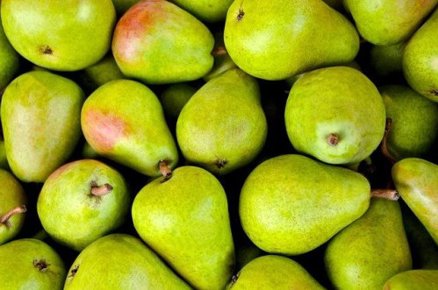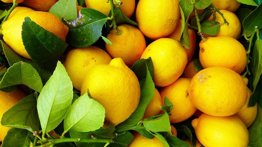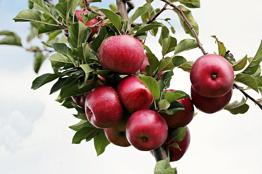Shemitah calendar for fruit

When does each kind of fruit have kedushat shevi'it and when is its' bi'ur time? Appendix A of the Consumer's Guide to Shemitah.
Updated: Cheshvan 5783
|
Fruit[1] |
Kedushat shevi'it starts |
Kedushat shevi'it ends |
Bi'ur time |
|
Almond |
Early July shemitah |
Early July eighth year (14 Tamuz 5783-2023) |
Early Feb. eighth year (14 Shevat 5783-2023) |
|
Almond |
Early May shemitah |
Early May eighth year (14 Iyar 5783-2023) |
Early Feb. eighth year (14 Shevat 5783-2023) |
|
Apple |
Mid-May shemitah |
Early July eighth year (14 Tamuz 2023-5783) |
Mid-Jan. eighth year (1 Shevat 5783-2023) |
|
Apricot |
Early April shemitah (1 Nissan 5782-2022) |
Early April eighth year (14 Nisan 2023-5783) |
Early Sept. end of shemitah (14 Elul 5782-2022) |
|
Avocado |
Mid-July shemitah |
Mid-July eighth year |
Early Oct. ninth year ( 14 Tishrei 5784-2023) |
|
Blueberry[4] |
Early Jan. shemitah |
Early Jan. eighth year (14 Tevet 5783-2023) |
Early Nov. eighth year (14 Cheshvan 5783-2023) |
|
Carob |
Mid-Sept. end of shemitah |
Early Nov. ninth year (14 Cheshvan 5784-2023) |
Mid-Jan. eighth year (1 Shevat 5783-2023) |
|
Cherry |
Mid-April shemitah |
Mid-April eighth year (1 Iyar 5783-2023) |
Early Aug. shemitah |
|
Chestnut[3] |
No k.s. |
NA |
NA |
|
Clementine (tangerine) |
Mid-Aug. shemitah |
Mid-Aug. eighth year (Early Elul 5783-2023) |
Mid-May eighth year (Early Sivan 5783-2023) |
|
Date |
Early Aug. shemitah |
Early Oct. ninth year (14 Tishrei 5784-2023) |
Purim eighth year (March 7, 5783-2023) |
|
Etrog |
3 Tishrei shemitah |
Mid-April eighth year (1 Iyar 5783-2023) |
Mid-April eighth year (1 Iyar 5783-2023) |
|
Feijoa |
Mid-Sept. end of shemitah (14 Elul 5782-2022) |
Mid-Sep. ninth year (1 Tishrei 5784-2023) |
Early March eighth year (14 Adar 5783-2023) |
|
Fig |
Mid-April shemitah |
Mid-April shemitah |
Chanukah eighth year (Dec. 19, 5783-2022) |
|
Grapefruit |
Early Sept. end of shemitah (1 Elul 5782-2022) |
Mid-Sep. ninth year (1 Tishrei 5784-2023) |
Mid-June eighth year (1 Tamuz 5783-2023) |
|
Guava |
Mid-July shemitah |
Mid-July eighth year (1 Av 5783-2023) |
Mid-Dec. eighth year (1 Tevet 5783-2022) |
|
Hazelnut3 |
No kedushat shevi'it (k.s.) |
Not Applicable (NA) |
NA |
|
Kiwi |
Mid-Aug. shemitah |
Mid-Aug. eighth year (Early Elul 5783-2023) |
Mid-March eighth year (Early Nisan 5783-2023) |
|
Kumquat |
Mid-Oct. eighth year (14 Tishrei 5783-2022) |
Mid-Oct. ninth year (1 Cheshvan 5784-2023) |
Mid-March eighth year (1 Nisan 5783-2023) |
|
Lemon and lime |
Early May shemitah |
Early May eighth year (Mid-Iyar 5783-2023) |
Early Oct. ninth year (Mid-Tishrei 5784-2023) |
|
Longanberry |
Early June shemitah |
Early June eighth year (14 Sivan 5783-2023) |
Mid-Dec. eighth year (1 Tevet 5783-2022) |
|
Loquat |
Mid-Jan. shemitah |
Mid-Jan. eighth year (1 Shevat 5783-2023) |
Early July shemitah |
|
Lychee |
Mid-May shemitah |
Early May eighth year (1 Sivan 5783-2023) |
Early-Nov. eighth year (14 Cheshvan 5783-2022) |
|
Mandarin |
Mid-Aug. shemitah |
Mid-Aug. eighth year (1 Elul 5783-2023) |
Mid-May eighth year (1 Sivan 5783-2023) |
|
Mango |
Early June shemitah |
Early June eighth year (14 Sivan 5783-2023) |
Mid-Feb. eighth year (Early Adar 5783-2023) |
|
Mulberry |
Early May shemitah |
Early May eighth year (14 Iyar 2023-5783) |
Early Oct. eighth year (14 Tishrei 5783-2022) |
|
Nectarine |
Early Feb. shemitah |
Early Feb. eighth year (14 Shevat 5783-2023) |
Early Dec. eighth year (14 Kislev 5783-2022) |
|
Oil olives |
Mid-Sept. end of shemitah (14 Elul 5782-2022) |
Mid-Sept. ninth year (1 Tishrei 5784-2023) |
Shavu'ot eighth year (May 26, 5783-2023) |
|
Orange |
Mid-Aug. shemitah (14 Av 5782-2022) |
Mid-Aug. eighth year (1 Elul 5783-2023) |
Mid-June eighth year (1 Tamuz 5783-2023) |
|
Passionfruit [6] |
Mid-Nov. shemitah (14 Kislev 5782-2021) |
Early Dec. eighth year (14Kislev 5783-2022) |
NA [7] |
|
Peach |
Early Feb. shemitah |
Late Jan. eighth year (Shevat 5783-2023) |
Early Dec. eighth year (Mid-Kislev 5783-2022) |
|
Pear |
Mid-June shemitah |
Mid-June eighth year (1 Tamuz 5783-2023) |
Early Nov. eighth year (14 Cheshvan 5783-2022) |
|
Pecan[2] |
Early Oct. eighth year (1 Tishrei 5783-2022) |
Mid-Nov. ninth year (1 Kislev 5784-2023) |
Mid-May eighth year (1 Sivan 5783-2023) |
|
Peelables (citrus: Or, Ora, Nova) |
Mid-Aug. end of shemitah (14 Av 5782-2022) |
Mid-Aug. eighth year (1 Elul 5783-2023) |
Mid-May eighth year (1 Sivan 5783-2023) |
|
Persimmon |
Mid-Aug. end of shemitah (14 Av 5782-2022) |
Mid-Aug. eighth year (1 Elul 5783-2023) |
Early Jan. eighth year (14 Tevet 5783-2022) |
|
Peruvian Apple Cactus (kobo) [5] |
Early Oct. shemitah (1 Cheshvan 5782-2021) |
Early Nov. eighth year (14 Cheshvan 5783-2022) |
Mid-Nov. shemitah (1 Kislev 5782-2022) |
|
Pistachio[3] |
No k.s. |
NA |
NA |
|
Pitaya (Dragonfruit) [5] |
Early Oct. shemitah |
Early Nov. eighth year (14 Cheshvan 5783) |
Mid-Nov. eighth year (1 Kislev 5783-2022) |
|
Plum – European (oval) |
Mid-July shemitah |
Mid-July eighth year (1 Av 5783-2023) |
Mid-Dec. eighth year (1 Tevet 5783-2022) |
|
Plum – Japanese (round) |
Mid-April shemitah |
Early May eighth year (14 Iyar 5783-2023) |
Mid-Dec. eighth year (1 Tevet 5783-2022) |
|
Pomegranate |
Mid-July shemitah |
Mid-July eighth year (1 Av 5783-2023) |
Mid-Feb. eighth year (1 Adar 5783-2023) |
|
Pomelo, sweetie (pomelit) |
Early Sept. end of shemitah (1 Elul 5782-2022) |
Early Sep. ninth year (14 Elul 5784-2023) |
Mid-June eighth year (1 Tamuz 5783-2023) |
|
Quince [8] |
Early July shemitah |
Early July eighth year (14 Tamuz 5783-2023) |
Mid-Jan. eighth year (1 Shevat 5783-2023) |
|
Sabra (prickly pear) [9] |
Early Jan. shemitah |
Early Jan. eighth year (14 Tevet 5783-2023) |
Early March. eighth year (14 Adar 5783-2022) |
|
Star fruit (carambola) |
Mid-Oct. shemitah (14 Cheshvan 5782-2022) |
Chanukah eighth year |
Mid-Feb. eighth year (1 Adar 5783-2023) |
|
Sweet cherry (Hackberry) |
Mid-April shemitah |
Mid-Aprileighth year (1 Iyar 5783-2023) |
Early Aug. shemitah |
|
Sweetsop (sugar apple, annona) |
Early July. shemitah |
Late June eighth year (14 Av 2023-5783) |
Mid-April eighth year (1 Iyar 5783-2023) |
|
Table grapes |
Mid-March shemitah |
Mid-March eighth year (1 Nisan 5783-2023) |
Erev Pesach eighth year |
|
Table olives |
Mid-July shemitah |
Mid-July eighth year (1 Av 5783-2023) |
Erev Shavu'ot eighth year (May 26, 5783-2023) |
|
Walnut |
No k.s.[3] |
NA |
NA |
|
Wine grapes |
Early July shemitah |
Early June eighth year (14 Sivan 5783-2023) |
Erev Pesach eighth year (April 6, 5783-2023) |
[1] General note: The sefichin prohibition does not apply to fruit.
The list is based on the solar calendar. Since the stage that determines shemitah sanctity for fruit is chanatah, the beginning of the fruit's formation, we follow the solar calendar. This is because the processes of growth for both fruits and vegetables follow the solar calendar. See Tosafot, Rosh Hashanah 15a, s.v. dechadashim. The dates in parenthesis (Gregorian and Hebrew) are correct for this shemitah year only.
These tables were prepared with the help of Mr. Meir Frankel of blessed memory (The Agriculture Guide, Training and Professional Services Unit of the Ministry of Agriculture) and Agron. Dr. Mordechai Shomron (Torah VeHa'aretz Institute).
[2] In contrast to other nuts, there are pecans that grow in Israel. However, some maintain that bi'ur does not apply to them because the nuts are often on the trees for the entire year; see Chapter 24 §B.7.
[3] This fruit is not grown in Israel (as of 5782); since all such fruits are imported, the laws of shemitah do not apply.
[4] Fruit available in the early winter is from varieties where there may be a problem of orlah during the shemitah year and the eighth year (5782-3).
[5] Both pitaya (dragon fruit) and Peruvian apple cactus begin to develop around Rosh Hashanah time, so during Cheshvan 5782 and 5783 fruit may be available with and without kedushat shevi'it, based on the time they began to develop (chanatah).
[6] Times here are according to those who hold that the passionfruit vine is a tree (most Ashekenazi posekim). For those who maintain that it is a vegetable, see the Shemitah Calendar for Vegetables.
[7] Available all year, so bi'ur does not apply.
[8] Most quince is imported. Local Israeli-grown quince generally is available in markets around Rosh Hashanah time, but at times harvest is earlier.
[9] In recent years there are more strains of prickly pears, so chanatah and harvest takes place year-round.




